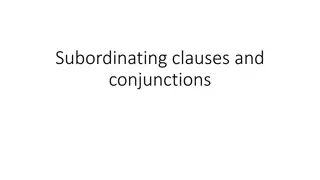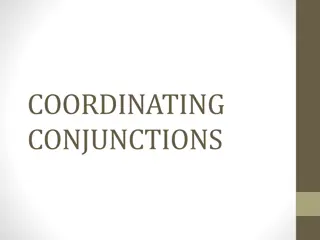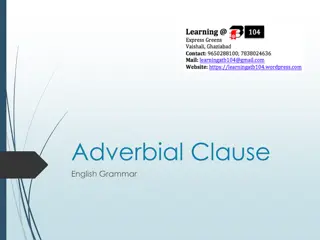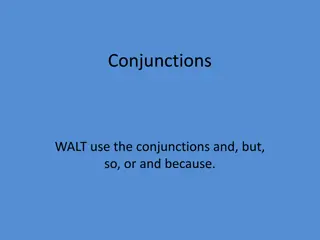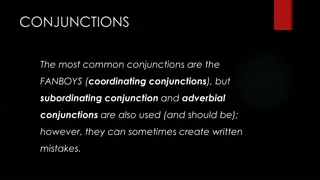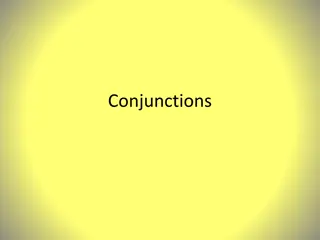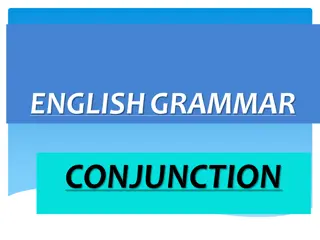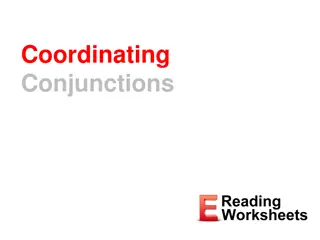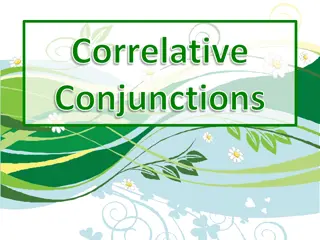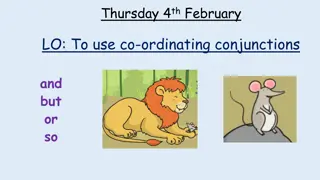
Understanding Subordinating Conjunctions
Learn about subordinating conjunctions, which link dependent clauses to main clauses in complex sentences. Explore examples, common subordinating conjunctions, and the functions they serve in sentence structures.
Download Presentation

Please find below an Image/Link to download the presentation.
The content on the website is provided AS IS for your information and personal use only. It may not be sold, licensed, or shared on other websites without obtaining consent from the author. If you encounter any issues during the download, it is possible that the publisher has removed the file from their server.
You are allowed to download the files provided on this website for personal or commercial use, subject to the condition that they are used lawfully. All files are the property of their respective owners.
The content on the website is provided AS IS for your information and personal use only. It may not be sold, licensed, or shared on other websites without obtaining consent from the author.
E N D
Presentation Transcript
What Are Subordinating Conjunctions? (with Examples) A subordinating conjunction is used to link a dependent clause (also known as a subordinate clause) to the main clause (also known as an independent clause). In each example below, the main clause is in colour, and the subordinating conjunction is underlined. She left early because Mike arrived with his new girlfriend. Keep your hand on the wound until the nurse asks you to take it off.
Here is a list of common subordinating conjunctions: After, although, as, as soon as, because, before, by the time, even if, even though, every time, if, in case, in order, even in the event, just in case, now that, once, only if, provided that, rahter than, since, so that, than, that, though until, when, whenever, where, whereas, wherever, whether, whether or not, while, why
The Function of a Subordinating Conjunction When a sentence has an independent clause (main clause) and at least one dependent clause, it is known as a complex sentence. In a complex sentence, the role of the subordinating conjunction and the dependent clause is to establish a time, a place, a reason, a condition, a concession, or a comparison for the main clause. The subordinating conjunction provides the bridge between the main clause and the dependent clause.





